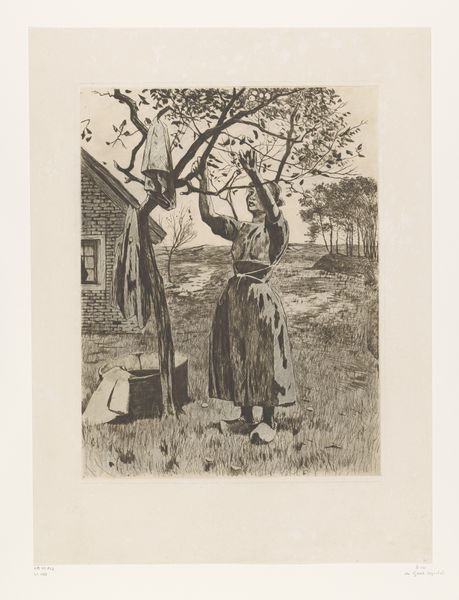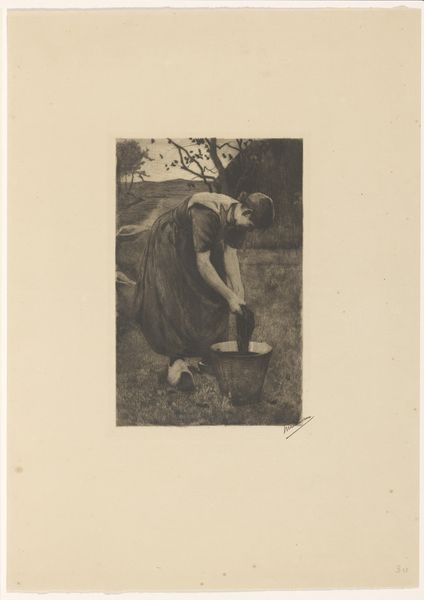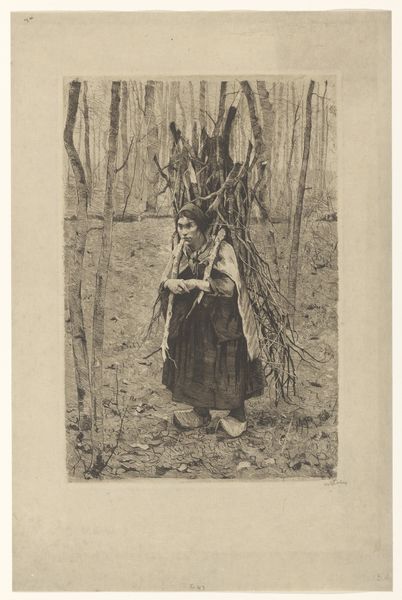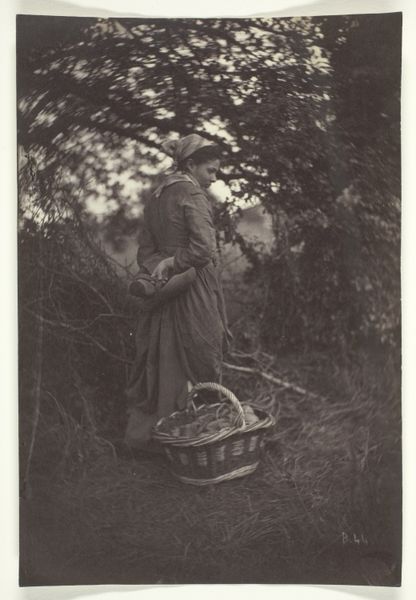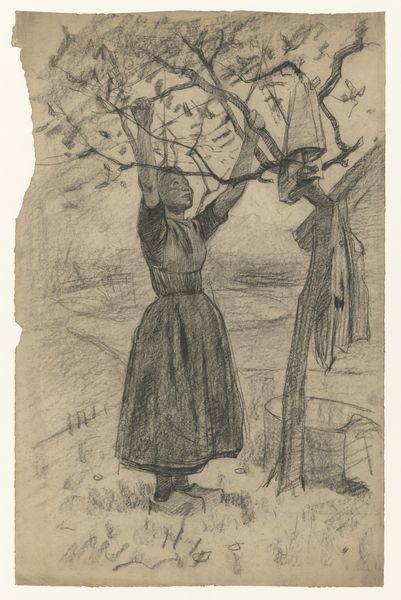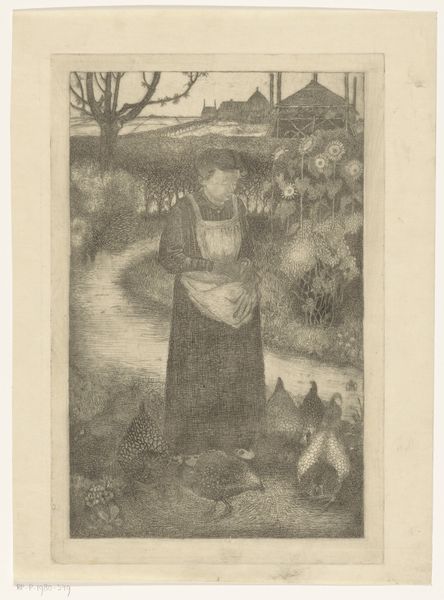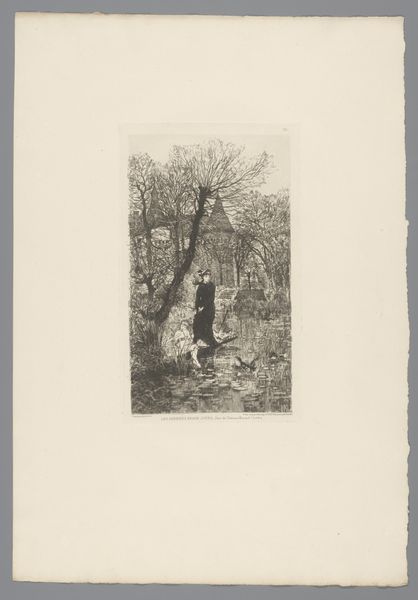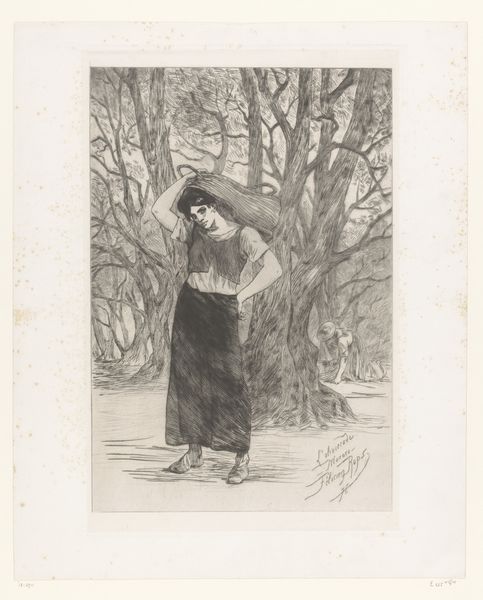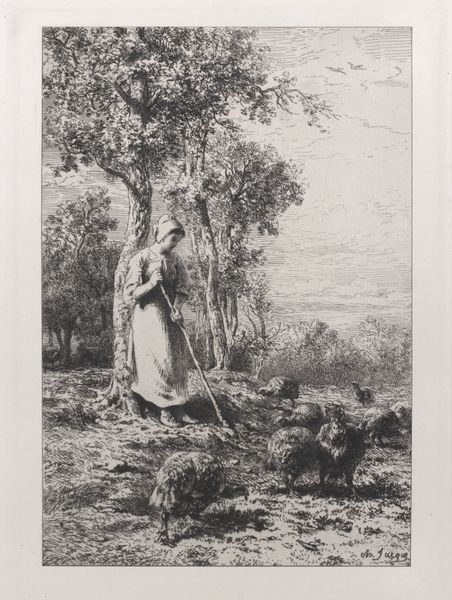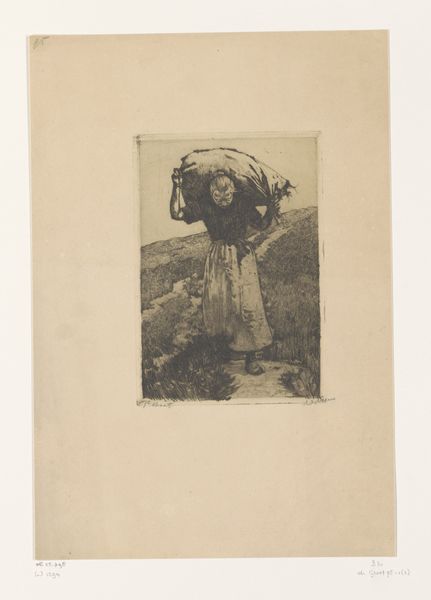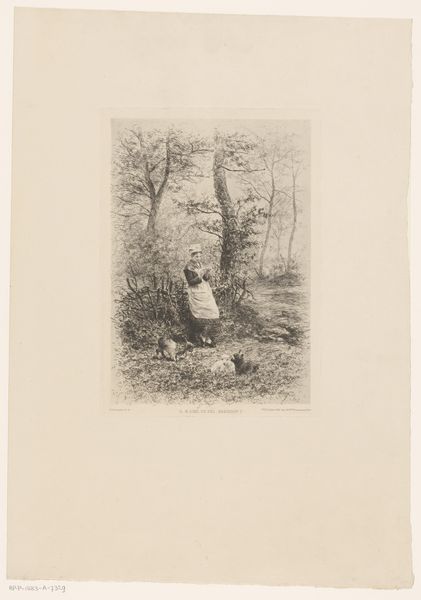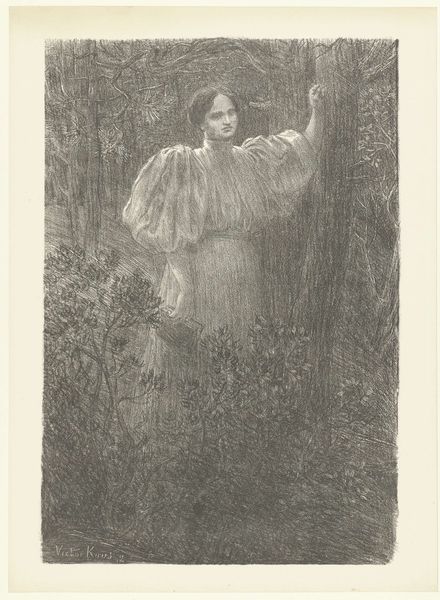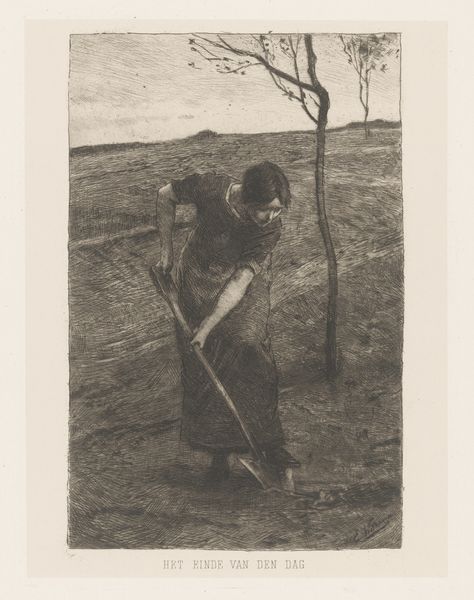
drawing, print, etching, paper
#
drawing
# print
#
etching
#
landscape
#
figuration
#
paper
#
genre-painting
#
realism
Dimensions: 467 × 360 mm (plate); 528 × 410 mm (sheet)
Copyright: Public Domain
Curator: Willem Witsen's etching, "The Apple Tree," created around 1885, presents a striking image of rural life. Editor: It's certainly dramatic. The dense crosshatching creates a palpable atmosphere, almost claustrophobic despite the open field in the background. Curator: Absolutely. The etching process lends itself to a rich symbolic vocabulary. Here, the apple tree, heavy with fruit, becomes a loaded image. Historically, apples often signify knowledge, temptation, even abundance. Editor: And notice how the figure is placed directly underneath the branches, her hands reaching up as if she's drawing power from the tree itself. Her dress merges into the lower tonal densities of the picture field. We might also focus on the textures: see the rough bark of the tree contrasted against the smooth fabric. The stark dark/light pattern and high contrast create the feeling of a woodcut, very eye-catching to viewers, indeed. Curator: Yes, there’s an undeniable grounding, a sense of being rooted to the land and life in that moment. It connects to a wider cultural memory. The tree is not simply a tree. In many Northern European folk traditions, it is life itself. This woman becomes intrinsically connected to its cycle. Her presence transforms this landscape into more than a setting, it transforms the moment into the universal feminine and the toil associated. Editor: So, less an individual portrait and more of an emblem. I find the visual weighting fascinating. The building anchors one side, balanced precariously by that stark white band of open horizon in the other. I am quite surprised, for a bucolic theme, by how disquieting the final picture feels! Curator: Indeed. What you’ve observed about the visual dynamics, the overall feel of it, reveals much of why this everyday image lingers. There is certainly more beneath the surface of what seems a genre scene at first glance. Editor: It speaks to how formal choices can subtly shift our understanding. It reminds us to consider how each element works independently and in tandem to reveal the deep human dimension beyond mere depiction.
Comments
No comments
Be the first to comment and join the conversation on the ultimate creative platform.
